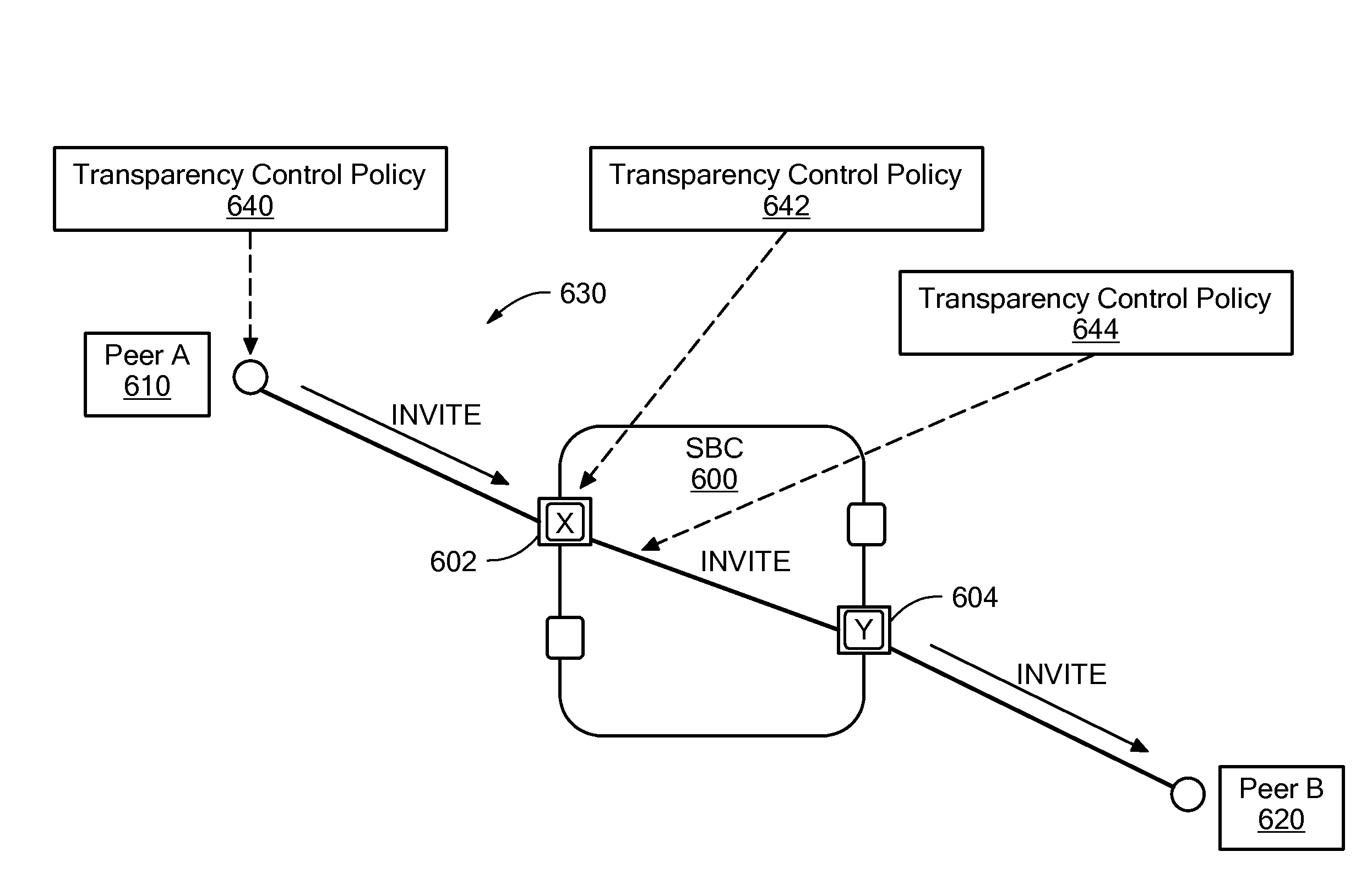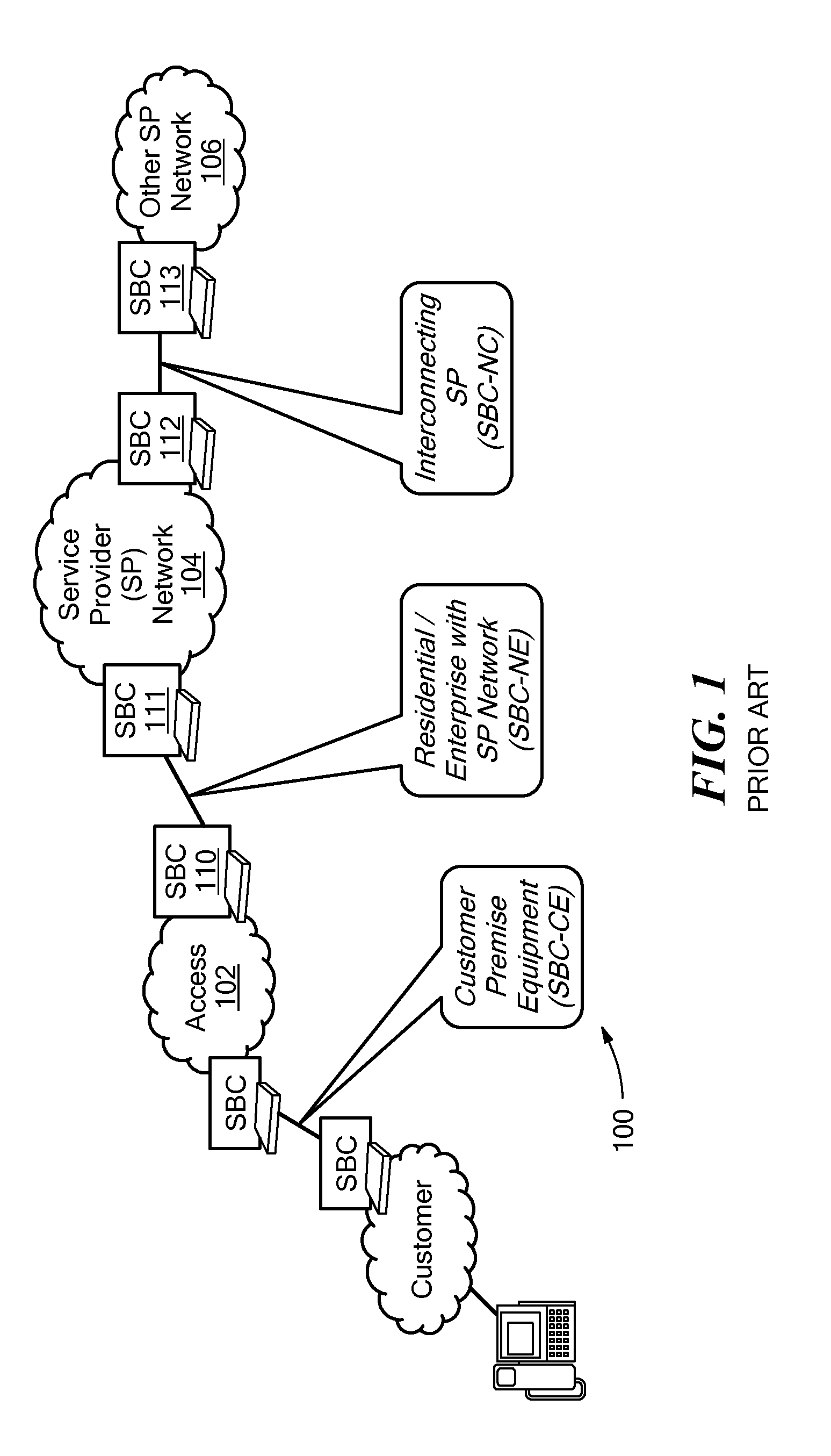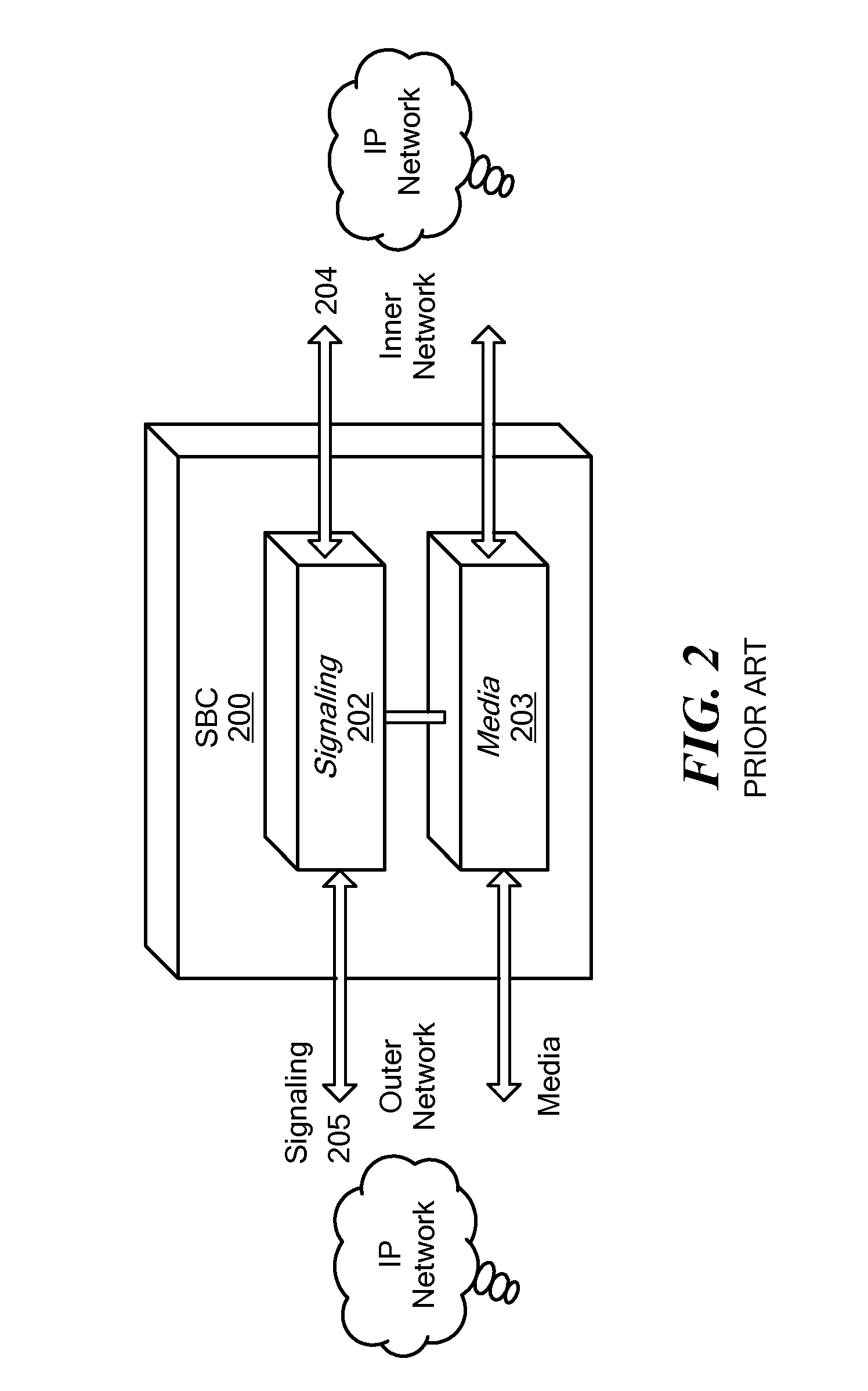Session information transparency control
- Summary
- Abstract
- Description
- Claims
- Application Information
AI Technical Summary
Benefits of technology
Problems solved by technology
Method used
Image
Examples
Embodiment Construction
[0032]In accordance with the present disclosure, transparency control policies for a node in a network that carries and / or processes signaling information are provided. The policies are configurable settings that can be applied with respect to the network node to control the types and content of information that passes through the node, is generated at the node, or terminates at the node. The present disclosure provides for configuration and application of transparency control policies based on a number of criteria, to provide a flexible and specific result for managing signaling information in relation to a network node.
[0033]Referring now to FIG. 6, an exemplary embodiment of the present disclosure is illustrated with a session border controller (SBC) 600 that operates as a network node that manages signaling traffic. SBC 600 manages signaling information between Peer A 610 and Peer B 620 and is shown in FIG. 6 as processing an invite request 630 from Peer A 610 that is to be dire...
PUM
 Login to View More
Login to View More Abstract
Description
Claims
Application Information
 Login to View More
Login to View More - R&D
- Intellectual Property
- Life Sciences
- Materials
- Tech Scout
- Unparalleled Data Quality
- Higher Quality Content
- 60% Fewer Hallucinations
Browse by: Latest US Patents, China's latest patents, Technical Efficacy Thesaurus, Application Domain, Technology Topic, Popular Technical Reports.
© 2025 PatSnap. All rights reserved.Legal|Privacy policy|Modern Slavery Act Transparency Statement|Sitemap|About US| Contact US: help@patsnap.com



